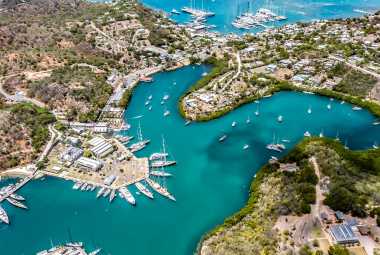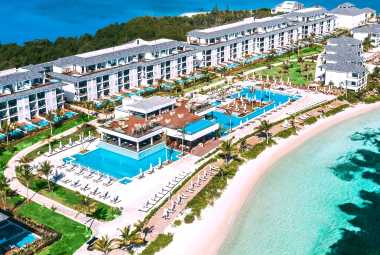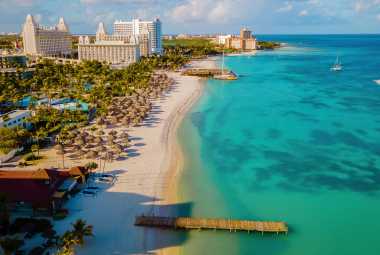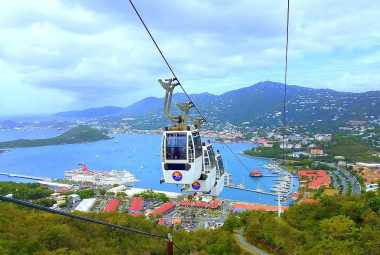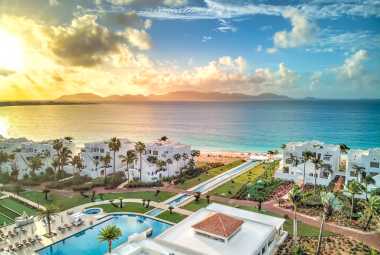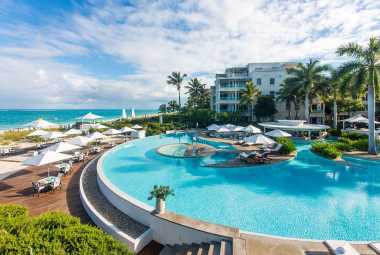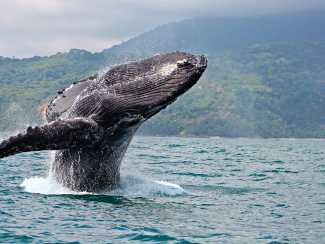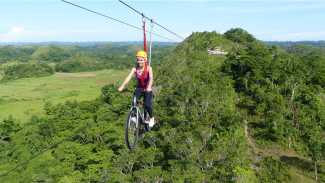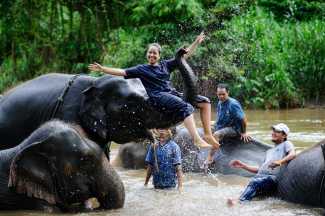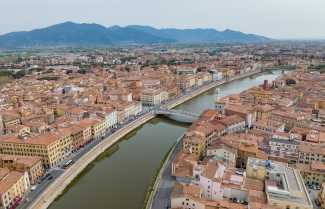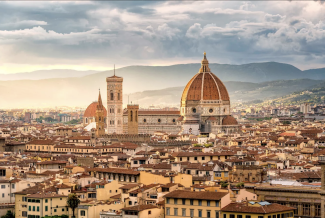Image by Getty Images
*Vacation Mode is a for-profit site. It contains paid banner advertisements that are generated and managed by a third-party network. This site also includes relevant affiliate links (both in the content and on the sidebar) all of which we do our best to clearly mark as such.
When considering travel destinations, the choice between the Philippines and Hawaii can be a tough decision. Geographical differences, cultural nuances, tourism attractions, cost of living, and the overall quality of life all play crucial roles in making an informed choice.
In this comprehensive comparison, we will delve into the unique aspects of each location, including their geographical features, cultural influences, tourism offerings, and cost of living. By exploring these key factors, we aim to provide an insightful analysis that can aid in determining which destination may be the better fit for your needs and preferences.
So, let's explore the geographical, cultural, and lifestyle disparities between the Philippines and Hawaii to help you make an informed decision.
Key Takeaways:
- The Philippines and Hawaii have distinct geographical differences, with the former being a larger and more diverse country while the latter is a group of isolated islands with a tropical climate.
- Both the Philippines and Hawaii have rich and unique cultures, shaped by their histories and influences from other countries. However, the Philippines has a more diverse cultural mix due to its colonization and trade relations.
- When it comes to tourism, both the Philippines and Hawaii offer stunning destinations and exciting activities. However, the Philippines is generally more affordable for travelers, making it a budget-friendly option.
HAWAII OR THE PHILIPPINES!?
Video by BecomingFilipino
Geographical Differences
Geographical differences between Hawaii and the Philippines play a crucial role in shaping the unique characteristics of each region, from their location to topography and climate.
Hawaii is a group of volcanic islands located in the central Pacific Ocean, around 2,000 miles southwest of the United States mainland. The islands of Hawaii are renowned for their dramatic volcanic landscapes, featuring rugged cliffs, deep valleys, and black sand beaches.
In contrast, the Philippines is an archipelago of over 7,000 islands situated in Southeast Asia, bordered by the Philippine Sea, South China Sea, and the Celebes Sea. The topography of the Philippines is characterized by its mountainous terrain, lush tropical rainforests, and stunning coastal plains.
Location and Size
The location and size of Hawaii and the Philippines hold significant importance in understanding their respective positions in the Pacific region and the differences in their landmass and population.
Hawaii, situated in the central Pacific, is an archipelago of volcanic islands, covering an area of approximately 10,931 square kilometers. It boasts a population of around 1.4 million people, making it the 40th most populous U.S. state.
On the other hand, the Philippines is an archipelago of over 7,000 islands located in Southeast Asia, with a total land area of about 300,000 square kilometers and a population of over 100 million, making it the 13th most populated country in the world.
Topography and Climate
The topography and climate of Hawaii and the Philippines contribute to the distinct environmental settings on each island, showcasing diverse landscapes and weather patterns across the Pacific region.
Hawaii's topography is characterized by volcanic formations, including the famous Mauna Kea and Mauna Loa volcanoes, which rise dramatically from the sea. The islands also feature lush rainforests, cascading waterfalls, and stunning beaches.
In contrast, the Philippines is an archipelago with over 7,000 islands, each with its own unique terrain, ranging from towering mountains, sprawling rice terraces, to beautiful coastal plains. This creates a varied and captivating landscape that allures millions of visitors each year.
Cultural Differences
Cultural differences between the Filipinx community and Hawaii reflect a rich tapestry of history, traditions, and heritage, showcasing the vibrant cultural diversity present in both regions.
The Filipinx community in Hawaii has deep-rooted connections to their traditional heritage, which intertwines with the historical significance of the islands. The various cultural practices, such as parol lantern making, traditional dances like Tinikling, and the influence of Adobo in Hawaiian cuisine, exemplify the fusion of two unique cultural worlds. This cultural exchange has truly established a colorful and profound cultural identity within the local Hawai'ian community, adding a layer of cultural richness to the island's history and heritage.
History and Influences
The histories and influences of colonialism, U.S. impact, and ethnic migration have deeply shaped the cultural narratives and diasporic experiences within the Filipinx community and Hawaii, reflecting the broader imperialistic forces at play in the Pacific region.
Historically, the Philippines and Hawaii have endured waves of colonization and foreign rule, from Spanish conquest to American occupation, significantly impacting their cultural landscapes. The forced migration of laborers, known as sakadas, from the Philippines to work on Hawaiian plantations further intertwines the shared histories of these two regions.
These interconnected experiences have contributed to the evolution of shared cultural identities and the emergence of vibrant traditions in both the Filipinx community and Hawaii. The fusion of indigenous, colonial, and immigrant influences continues to shape the multifaceted narratives and resilience of these communities.
Language and Customs
The languages and customs of Hawaii and the Philippines are intertwined with rich storytelling traditions and diverse cultural experiences, reflecting the deep-rooted connections and commonalities shared between the two regions.
Both Hawaii and the Philippines boast linguistic diversity, with Hawaiian and Filipino languages representing the archipelago's unique heritage and history. Hawaiian storytelling, often conveyed through hula, chants, and legends, encapsulates the islands' profound spirituality and ancestral wisdom. Similarly, the Philippines commands a rich oral tradition, with epic poems and mythologies serving as a testament to its people's resilience and creativity.
Both cultures place immense value on communal gatherings and festivals, such as the Philippines's Ati-Atihan and Hawaii's Merrie Monarch Festival, which celebrate kinship, pride, and the preservation of customs. These traditional practices embody a spirit of vibrancy and inclusivity, reinforcing the interconnected narratives that link Hawaii and the Philippines.
Tourism and Attractions
Tourism and attractions in Hawaii and the Philippines offer residents and visitors an immersive experience into the vibrant art, heritage, and community stories embedded within the local communities, showcasing the diverse cultural tapestries of both regions.
In Hawaii, the rich heritage of the native Hawaiian people is celebrated through traditional arts, hula performances, and fascinating historical sites. Visitors can also indulge in the awe-inspiring natural landscapes - from the dramatic cliffs of the Napali Coast to the volcanic wonders of Maui.
In the Philippines, the colonial architecture of Manila stands as a testament to the country's complex history, while the stunning beaches of Boracay and the breathtaking rice terraces in Ifugao offer unforgettable experiences.
Popular Tourist Destinations
The popular tourist destinations in Hawaii and the Philippines attract a diverse population of visitors, offering scenic attractions and cultural experiences that showcase the beauty and allure of the Pacific region.
With its stunning beaches, lush landscapes, and warm tropical climate, Hawaii is a paradise for nature lovers and adventurers. Visitors can explore the volcanic wonders of Maui and Big Island, indulge in water activities on the famous Waikiki Beach in Oahu or experience the traditional Polynesian culture at a Luau.
Meanwhile, the Philippines boasts an incredible array of island paradises like Palawan and Boracay with their pristine waters and white sandy beaches. The rich history and vibrant culture are celebrated through prominent landmarks such as the Chocolate Hills in Bohol and the Spanish colonial architecture in Vigan.
Activities and Experiences
The activities and experiences available in Hawaii and the Philippines encompass a rich tapestry of cultural tourism, traditional stories, and immersive traditions that offer visitors a deeper understanding of the local heritage and community life.
From participating in Hawaiian hula dancing and lei making workshops to learning about the ancient Polynesian navigation techniques in the Philippines, travelers can engage in hands-on experiences that depict the vibrant customs of these islands. Visitors can also delve into the rich history of Hawaiian and Filipino arts and crafts at local museums and markets, gaining insights into the diversity and creativity of the local communities.
Moreover, cultural festivals and events in both destinations, such as the Pahiyas Festival in the Philippines and the Aloha Festivals in Hawaii, provide opportunities to witness traditional performances, taste authentic cuisines, and partake in community celebrations that showcase centuries-old customs and rituals.
Top resorts in the Philippines
Amanpulo, Palawan

Located on the secluded island of Pamalican, Amanpulo is an exclusive paradise embodying tropical tranquility. Its luxurious villas and casitas are spread along pristine white-sand beaches, offering unparalleled privacy and access to the crystal-clear waters of the Sulu Sea. The resort is renowned for its world-class spa, exceptional dining experiences, and a wide range of water sports and island activities, making it a perfect retreat for those seeking ultimate relaxation and adventure in harmony with nature.
El Nido Resorts, Pangulasian Island, Palawan

Often referred to as the “Island of the Sun,” Pangulasian Island is part of El Nido Resorts, offering stunning views of both sunrise and sunset over the Bacuit Bay. This eco-luxury resort provides a blend of Filipino design and modern amenities in its spacious villas, with activities centered around the incredible biodiversity of El Nido's marine and terrestrial environments. Guests can indulge in snorkeling, diving, kayaking, and island-hopping tours, embracing the natural beauty of Palawan.
Click here to get rates from Booking.com.
Click here to get rates from Agoda.com.
Shangri-La's Boracay Resort and Spa, Boracay

Set in the heart of Boracay's vibrant and crystal-clear waters, Shangri-La's Boracay Resort and Spa offers an exclusive sanctuary. It features luxurious villas and suites with breathtaking sea views, private beaches, a range of fine dining options, and a spa set amidst a lush hillside. The resort is ideal for travelers seeking a blend of relaxation, gourmet experiences, and water sports on one of the world's most famous beaches.
Click here to get rates from Agoda.com.
The Farm at San Benito, Batangas

A holistic wellness retreat located in the foothills of Mount Malarayat, The Farm at San Benito provides a unique escape focused on health, healing, and well-being. With its vegan cuisine, natural spa treatments, and a variety of wellness programs, including detox, yoga, and meditation, guests can enjoy a rejuvenating experience surrounded by nature. The resort's luxurious villas and suites are designed to offer tranquility and comfort in a serene setting.
Click here to get rates from Booking.com.
Click here to get rates from Agoda.com.
Atmosphere Resorts & Spa, Dumaguete, Negros Oriental

Situated on the lush coastline of Dumaguete, Atmosphere Resorts & Spa is a boutique resort that offers a perfect mix of tropical luxury and dive adventure. Specializing in scuba diving, the resort provides access to some of the world's best muck diving sites, with the renowned Apo Island nearby. Its spacious accommodations, spa, and yoga classes cater to those looking for a wellness and adventure holiday in an intimate and relaxed environment.
Each of these resorts provides a unique glimpse into the diverse beauty and hospitality that the Philippines has to offer, making them top choices for travelers seeking luxury, adventure, and relaxation.
Click here to get rates from Agoda.com.
Top resorts in Hawaii
Four Seasons Resort Maui at Wailea

The Four Seasons Resort Maui at Wailea epitomizes luxury and serenity, offering an unparalleled experience in one of Hawaii's most sought-after locations. With its stunning oceanfront setting, this resort provides guests with majestic views of the Pacific Ocean, complemented by the backdrop of the lush Hawaiian landscape. Renowned for its exceptional service, the resort offers a variety of recreational activities, including three saltwater pools, a state-of-the-art spa, and access to championship golf courses. The dining options are equally impressive, featuring a range of gourmet cuisine that showcases the best of local ingredients.
Click here to get rates from Booking.com.
Click here to get rates from Agoda.com.
The Ritz-Carlton, Kapalua

Set amidst the natural beauty of Maui, The Ritz-Carlton, Kapalua offers a serene escape with a touch of elegance and sophistication. This resort is surrounded by stunning landscapes, including picturesque beaches, lush rainforests, and two championship golf courses. Guests can indulge in the luxury spa, enjoy fine dining at several on-site restaurants, or participate in unique cultural experiences that celebrate Hawaiian heritage. The Ritz-Carlton, Kapalua is an ideal destination for those seeking a blend of relaxation, adventure, and cultural immersion in a luxurious setting.
Click here to get rates from Booking.com.
Click here to get rates from Agoda.com.
Halekulani

Halekulani, located on the shores of Waikiki Beach in Oahu, is an oasis of tranquility and timeless elegance. Known for its impeccable service and gracious hospitality, this resort offers guests a slice of paradise with its oceanfront views and serene atmosphere. Halekulani features several award-winning restaurants, a world-class spa, and an iconic pool with a mosaic of an orchid at its bottom. The resort's commitment to culture, arts, and local heritage makes it a distinguished choice for travelers looking for an authentic Hawaiian experience coupled with luxury.
Click here to get rates from Booking.com.
Click here to get rates from Agoda.com.
Montage Kapalua Bay

Nestled in the heart of Maui's picturesque Kapalua Bay, Montage Kapalua Bay is a luxury resort that offers a perfect blend of natural beauty and refined hospitality. This all-suite resort provides spacious accommodations with large lanais offering breathtaking views of the Pacific Ocean. Guests can enjoy a range of amenities, including a world-class spa, championship golf courses nearby, and exceptional dining experiences that highlight local flavors. The resort's emphasis on personalized service and its stunning location make it a favorite among those seeking a luxurious and intimate Hawaiian getaway.
Click here to get rates from Booking.com.
Click here to get rates from Agoda.com.
Aulani, A Disney Resort & Spa

Aulani, A Disney Resort & Spa, located on the leeward coast of Oahu, offers a unique family-friendly vacation experience that combines the magic of Disney with the rich culture and beauty of Hawaii. This resort features a variety of activities and entertainment options for all ages, including themed pools, a lazy river, water slides, and a private snorkeling lagoon. Guests can also explore Hawaiian culture through storytelling, dance, and art, making Aulani an ideal destination for families looking to immerse themselves in the island's traditions while enjoying the comforts and conveniences of a world-class resort.
Click here to get rates from Booking.com.
Click here to get rates from Agoda.com.
Cost of Living
The cost of living in Hawaii and the Philippines encompasses various factors such as housing, food, and transportation, highlighting the economic differences and lifestyle considerations in both regions.
Regarding housing costs, Hawaii tends to be significantly higher than the Philippines, with the average monthly rent for a one-bedroom apartment in Honolulu being almost four times that of a similar property in Manila. In terms of food expenses, the Philippines offers lower prices for daily groceries, while in Hawaii, the cost of imported goods contributes to the overall higher food expenditure.
Regarding transportation, the Philippines provides affordable public transportation options, such as jeepneys and tricycles, while Hawaii's reliance on cars and gas prices adds to the financial burden. These economic differences reflect the distinct lifestyle factors impacting residents and expatriates in each location.
Housing and Accommodations
The housing and accommodation options in Hawaii and the Philippines cater to the diverse needs of residents and the local population, reflecting unique housing dynamics and lifestyle preferences in both regions.
In Hawaii, residents and visitors often seek out properties that offer stunning ocean views, luxurious amenities, and a tranquil environment. The diverse architectural styles, from modern beachfront condos to traditional plantation-style homes, provide options for various tastes and budgets.
In the Philippines, the accommodation offerings are equally diverse, ranging from bustling urban apartments in Manila to beautiful beachfront villas in Boracay. The housing options in both locations are deeply intertwined with the cultural, geographical, and economic factors shaping the local way of life.
Food and Transportation
Food and transportation options in Hawaii and the Philippines play a pivotal role in shaping the economic landscape and lifestyle choices of residents, reflecting the diverse culinary and commuting experiences across both regions.
In Hawaii, locals and visitors indulge in a blend of traditional Polynesian cuisine, fresh seafood, and vibrant tropical fruits, heavily influenced by the island's unique resources and multicultural heritage. The availability of fresh ingredients and fusion of flavors define the dining experience, attracting tourists and contributing significantly to the local economy.
On the other hand, the Philippines presents a rich tapestry of flavors, with its culinary landscape celebrated for the harmonious blend of Spanish, Chinese, and indigenous influences. The diverse street food culture and bustling market scenes reflect the importance of food in Filipino society, acting as a social glue and economic driver.
The transportation networks in both regions differ in terms of infrastructure and modes of travel. In Hawaii, the reliance on car rentals and scenic coastal drives intertwines with the accessibility of public transport, addressing the needs of residents and catering to the influx of tourists.
Conversely, the Philippines demonstrates a dynamic interplay of modern transport systems and traditional modes, such as jeepneys and tricycles, embodying the vibrant, bustling nature of everyday life while also impacting the local economy and livelihoods of drivers and operators.
Quality of Life

The quality of life in Hawaii and the Philippines encompasses economic, educational, and healthcare factors, contributing to the overall well-being and opportunities available to residents in both regions.
Regarding economic aspects, Hawaii is known for its diverse industries including tourism, agriculture, and military defense, providing a stable economic base for its residents. On the other hand, the Philippines has experienced rapid economic growth in recent years, with thriving sectors such as business process outsourcing and manufacturing offering employment opportunities.
In terms of education, both Hawaii and the Philippines are committed to providing accessible and quality education. Hawaii boasts a strong public education system and renowned higher education institutions, while the Philippines is increasingly focusing on improving its educational infrastructure and promoting literacy and skills development.
When comparing healthcare, Hawaii is recognized for its advanced medical facilities and health initiatives, contributing to the well-being of its residents. Similarly, the Philippines has made strides in enhancing its healthcare services, aiming to improve accessibility and quality of care for its population.
Economy and Job Opportunities
The economies and job opportunities in Hawaii and the Philippines reflect the labor dynamics, historical influences, and contemporary challenges of exploitation within the workforce, shaping the employment landscapes in both regions.
In Hawaii, the economy is heavily reliant on tourism, agriculture, and military spending. The historical influence of colonization has contributed to disparities in wealth distribution and employment opportunities among different ethnic groups. The job market in Hawaii is also affected by a high cost of living, making it challenging for workers to meet their basic needs.
On the other hand, the economy of the Philippines is diverse, with industries such as manufacturing, business process outsourcing, and agriculture playing significant roles. The country grapples with issues of underemployment and exploitation, particularly in sectors like domestic work and low-skilled labor.
Both regions face contemporary challenges in the form of worker exploitation, inadequate labor rights enforcement, and unequal access to economic opportunities. Efforts to address these issues involve policy reforms, advocacy for workers' rights, and initiatives to promote inclusive economic growth.
Education and Healthcare

The education and healthcare systems in Hawaii and the Philippines have a profound impact on the well-being and opportunities for residents, reflecting the diverse experiences and access to essential services in both regions.
Education in Hawaii is characterized by a strong public school system, with an emphasis on cultural diversity and environmental education. Higher education options, including the University of Hawaii, offer diverse academic opportunities.
In contrast, the Philippines faces challenges in providing equal access to education, particularly in rural areas. Despite this, the Philippines has a high literacy rate, reflecting the value placed on education.
Healthcare in Hawaii benefits from its geographical isolation, with a focus on preventive care and a strong emphasis on community health. The state's remote location can also result in limited access to specialized medical services.
On the other hand, the Philippines has made strides in improving healthcare access, but challenges persist, particularly in rural and underserved areas.
Conclusion: Which is Better - Philippines or Hawaii?
The comparison between the Philippines and Hawaii delves into their unique experiences, cultural commonalities, and the imperative discourse of demilitarization in the Asia Pacific region, emphasizing the complexities of assessing which is 'better.'
Both the Philippines and Hawaii offer breathtaking natural landscapes. While the Philippines boasts stunning terraced rice fields, pristine beaches, and vibrant coral reefs, Hawaii showcases its iconic volcanic landscapes, lush rainforests, and world-renowned surf spots.
The cultural commonalities between the two regions highlight the rich history of indigenous traditions and the influence of colonialism. The diverse cuisine in both places reflects a blend of indigenous, Spanish, and American flavors, contributing to the distinctive gastronomic experiences in each locale.
The imperative discourse of demilitarization in the Asia Pacific region is a crucial consideration. Hawaii's history as a strategic military outpost and the presence of numerous military bases in the Philippines underscores the need for dialogue on peace, security, and the rights of indigenous peoples and local communities.


